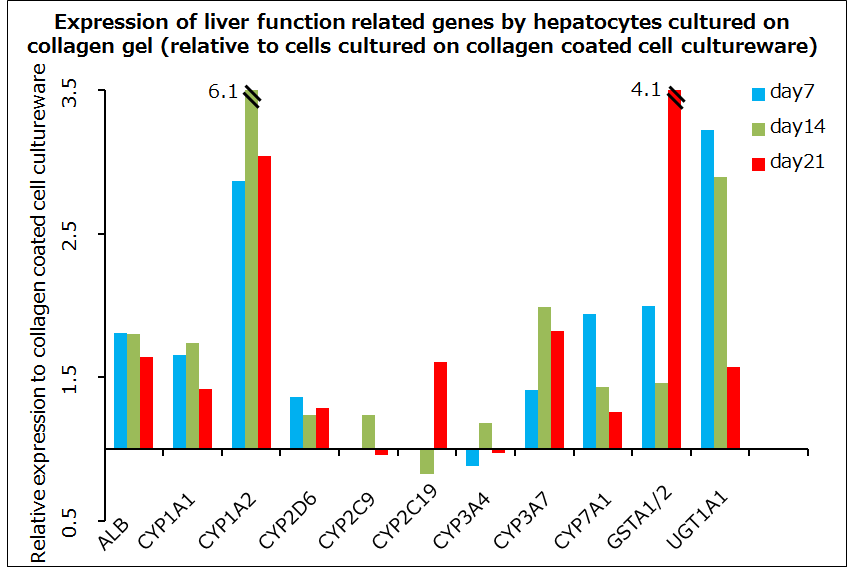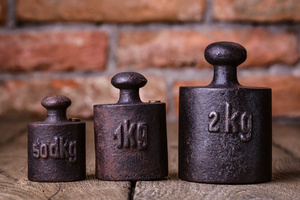Resources
Categories
Does collagen coating influence experimental results?

Collagen and cell culture
Collagen is widely used as a coating for cell cultureware to promote cell adhesion and proliferation. This coating potential of collage was first reported in a 1956 paper1) by Gey et al. who established the world’s first human cell line called HeLa in 1951. Essentially, after the preparation of a disk-like collagen gel with a thickness of about 3.8 mm and a diameter of about 3.8 cm, some moisture is removed using a glass roller bottle. Thereafter, 29 cell lines and tissues including 24 human-derived samples were cultured on the gel. This led to the proliferation of 28 samples being enhanced in comparison to culture on glass, but frog skin tissue showed no change. In the addendum of the same paper, they describe the direct addition of collagen solution into a roller bottle to prepare dry collagen gel; this is similar to current collagen coating methods.
Stability of collagen following cell cultureware coating
Since collagen is commonly used for coating in cell culture, various brands of collagen-coated cultureware are sold in order to reduce research labour. However, it has been reported that collagen oxidises when exposed to air, forming intramolecular cross-links. Nadzir et al. examined the effect of storage of collagen-coated cell cultureware in nitrogen or atmospheric air and observed the fibrous structure of collagen. They observed normal collagen fibres in the cell cultureware stored under a nitrogen atmosphere, whereas the fibre structures of collagen in cell cultureware kept under the atmosphere changed into a granular form2). In addition, we compared the liver function after primary hepatocytes were cultured on collagen-coated plates prepared in advance or purchased commercially and found that commercially coated plates showed similar results to gelatine, suggesting that collagen may have been thermally denatured.

Various collagen coating methods
So, what method is most optimal for coating cell cultureware with collagen? Following our research, we found approximately ten good protocols created by collagen makers, cell cultureware makers and reference books; they were narrowed down to the following methods described below:
| Collagen concentration | Amount of collagen solution | Collagen amount | Coating time | Incubation temperature | Steps after incubation | Washing solution | Number of washes |
|---|---|---|---|---|---|---|---|
| 0.001%, 0.050%, 0.100%, etc. |
0.3~0.5mL/24well, 1~2mL/35mm dish, 1.5mL/chamber, etc. |
3μg/cm2, 56μg/cm2, 100μg/cm2, etc. |
Aspiration immeadiately after adding, 30 mins, Overnight, etc. |
Room temperature, 37℃ |
Aspiration, Aspiration after air drying |
PBS, Culture medium, ddH2O |
Twice, 4-5 times |
Note: The table above was produced on the basis of publicly available information, so the appropriate conditions may differ depending on the cell cultureware and cells used.
At Koken, we have introduced a method of collagen coating recommending dilution of a 0.3 or 0.5% collagen acidic solution by about 10 times with approximately 50 μg / cm2 of collagen being used. While for those not familiar with collagen coating, we recommend the evaluation of the collagen concentration suitable for cell culture through the use of a dilution series.
Comparison between collagen coating and collagen gel
Cell culture was performed at the start on collagen gel in the paper by Gey et al. This raised the question if there is any difference in the function of cells cultured on collagen gel and collagen-coated cell cultureware? As an example, we mention data comparing the two methods using HepG2 cells at our company. The expression level of liver function related genes in cells cultured on collagen gel was enhanced compared to cells cultured on collagen-coated cell cultureware. In recent years, there have been increasing reports related to the significance of mechanobiology; how the hardness of the cell cultureware to which cells adhere to affects their cell function, and hence it may be a factor behind the differences between the two methods.



